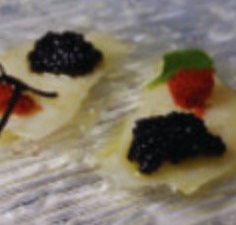Hong Kong Superstars
May 31, 2018

Hong Kong is a city of restaurants and a foodie haven. Seemingly every week there’s a new opening, adding to the huge array of dining options. Out of all those restaurants, only six have achieved the coveted three-Michelin-star rating. In the interest of research and for the benefit of Business Traveler readers, I made it my mission to visit all six of those restaurants for lunch or dinner. Here are the results of that arduous experiment:
T’ang Court
Located inside the stylish Langham Hong Kong in Kowloon, T’ang Court is perhaps the most traditional of the six restaurants. It pays tribute to the Tang Dynasty (618 AD – 907 AD) considered a high point of Chinese culture. T’ang Court’s menu highlights traditional Cantonese favorites and strives for authenticity. The menu is paired with an extensive wine list and excellent, formal service from a knowledgeable staff.
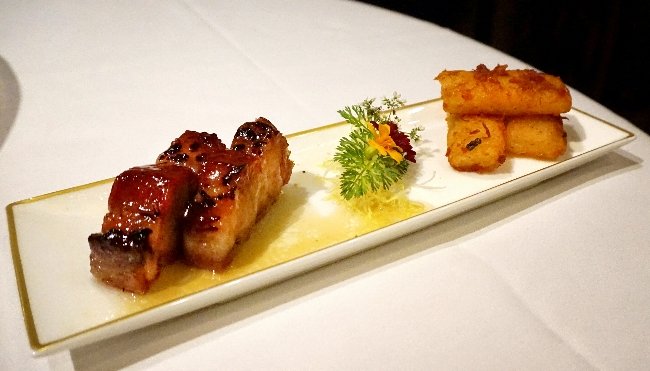
Pan-fried rice flour rolls with Cantonese-style barbeque pork at T’ang Court (Photo by Freddy Sherman)
My evening was a delicious six-course tasting dinner, complete with wine pairings. Dinner started with some pan-fried rice flour rolls with a homemade spicy sauce coupled with a pair of delicious Cantonese-style barbecued pork spare ribs. After that came stir-fried mixed mushrooms and fungus with black truffle paste stuffed in a cooked tomato and served in a bowl of pumpkin soup. Next, a sauteed cod filet was served with cod fish taro puffs.
After the cod, we had stir-fried diced Japanese Wagyu beef, followed by fried rice with scallops, avocado, Yunnan ham and corn. The first dessert course was another traditional Cantonese treat, baked egg tarts followed by a platter of fresh, seasonal fruit, served with some delightful sparkling Piedmontese Moscato wine.
Visit langhamhotels.com
8 ½ Otto e Mezzo
Chef Umberto Bombana holds the distinction of having the only three-Michelin-starred Italian restaurant outside Italy, 8 ½ Otto e Mezzo. Bombana’s menu features popular, traditional Italian specialties, supplemented with fresh local ingredients. Bombana has also led the charge for fresh, seasonal truffles and helped create the truffle madness that takes hold of the city during the white and black truffle seasons.
My lunch started with a signature cocktail called “The Optimist,” made with Bacardi rum. The first appetizer was a plate of sliced black pork Culatello di Zibello from Oro Spigaroli. This is like some kind of super prosciutto and considered to be the best ham in the world. After the ham we had confit abalone carpaccio, served with sweet pepper and semi-dried tomato, and topped with a dollop of Royal Osetra caviar. Next was a stalk of warm, white asparagus, served with an orange and asparagus emulsion and wrapped in Iberico ham.
The first pasta course followed – macaroni with a ragout of fresh blue lobster from Brittany and sea urchin from Japan. This is a great example of Chef Bombana’s creativity, pairing the most common pasta in the world, macaroni, with exotic ingredients from all over the world. The macaroni was followed with another great pasta dish, tagliolini topped with black truffle. It was very simply prepared with butter and parmesan cheese and the truffle shaved onto the pasta tableside.
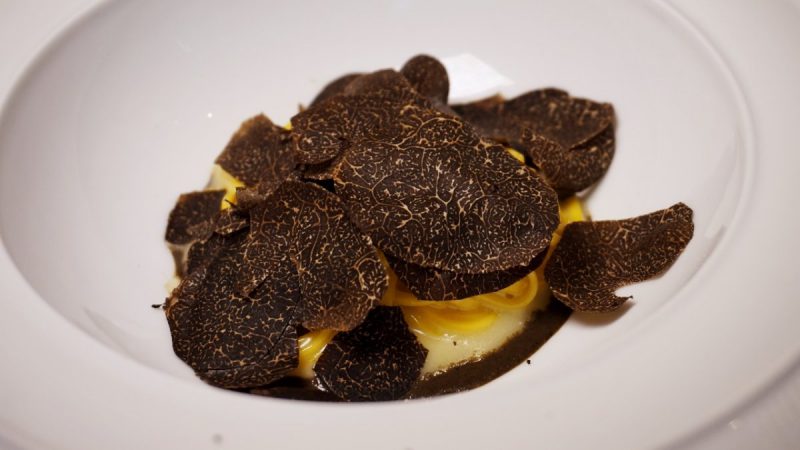
A tasty green vegetable risotto topped with sautéed Morel mushrooms came next. And then, finally, the last course—a Mayura signature tenderloin. This flavorful beef comes from Australia and was accompanied by a beef cheek and truffle jus and naturally, topped with black truffle shavings.
Dessert started with a sgroppino prepared tableside. This creamy Italian slushie is spiked with vodka and prosecco and traditionally made in the Venice area. The final dessert course featured hazelnut and chocolate with a hazelnut crunch, a warm chocolate mousse and some hazelnut gelato.
Visit ottoemezzobombana.com/hong-kong/en
L’Atelier de Joel Robuchon
The atelier or studio concept from celebrated French master chef Joel Robuchon is designed to make the fine dining experience more accessible and casual. After opening an Atelier location in Tokyo, Chef Robuchon brought the concept to Hong Kong (and subsequently a few other cities around the world). Based around an open, central kitchen, the counter seating and lack of formal dining tables means you get a more communal dining experience. Aside from your own food, you get to see other dishes coming out of the kitchen, possibly suggesting new things to try.
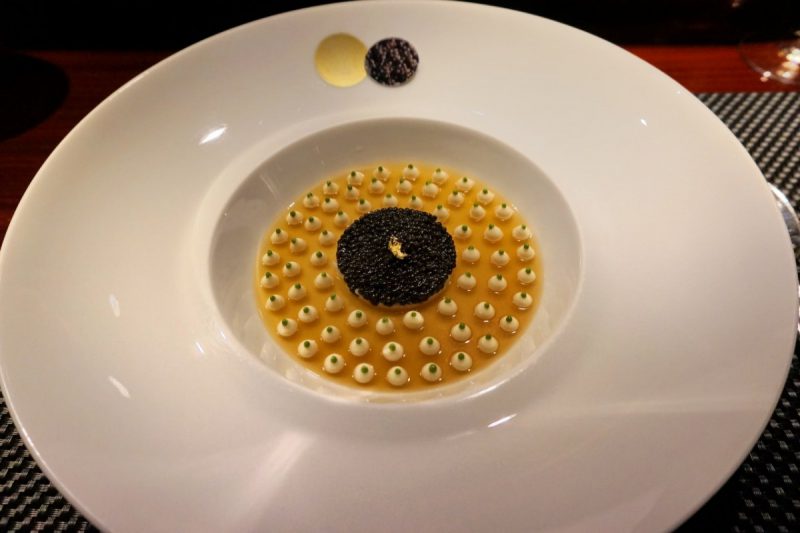
The food at L’ATELIER de Joel Robuchon is as beautiful as it tastes, this is caviar and crab in a lobster bisque, with tiny dabs of cauliflower cream (Photo by Freddy Sherman)
I spent an evening with the Discovery Menu, ten courses offered at a cost of $270 per person. The first course was a geometrically beautiful dish with a serving of Solange Imperial caviar spooned over a mound of Alaskan king crab meat in the center of a bowl of lobster jelly, surrounded by tiny dabs of cauliflower cream. Next was a soft boiled egg served on golden pearl rice with white Alba truffle and parmesan shavings. This was followed by pan-fried foie gras with grapes and ginger. A soup was next, fine spiced bouillon with baby vegetables and lobster raviolis.
For the fish course, we had pan-fried sea bass with lemongrass foam and stewed baby leeks. The main course was a choice of either free-range quail and foie gras or Wagyu steak. I went with the pan-seared Japanese A3 Wagyu beef, served with an aromatic arugula salad. For serious meat aficionados, A5 Wagyu is available for an extra charge. The desserts began with a beautiful cassis dome, prepared with red fruit coulis and pear jelly on a plate with praying hands art. To top off—a tuile platter with chestnut mousse and crispy coffee tuile, served with refreshing lime ice cream.
Visit robuchon.hk
Bo Innovation
A dinner at Bo Innovation is like nothing else you’ve ever experienced. Alvin Leung, also known as the “Demon Chef,” presents an entire sensory adventure, not just a meal. It starts with a glass showcase at the entrance, filled with trinkets and mementos relating to Hong Kong history. As you dine, these themes are revealed in the menu and in the food. This was my second meal at Bo and the thing that stands out is that everything starts with great food and talented chefs. Yes, there is a lot of theater involved but in the end, you’re eating amazing Cantonese food, prepared in creative and innovative ways.
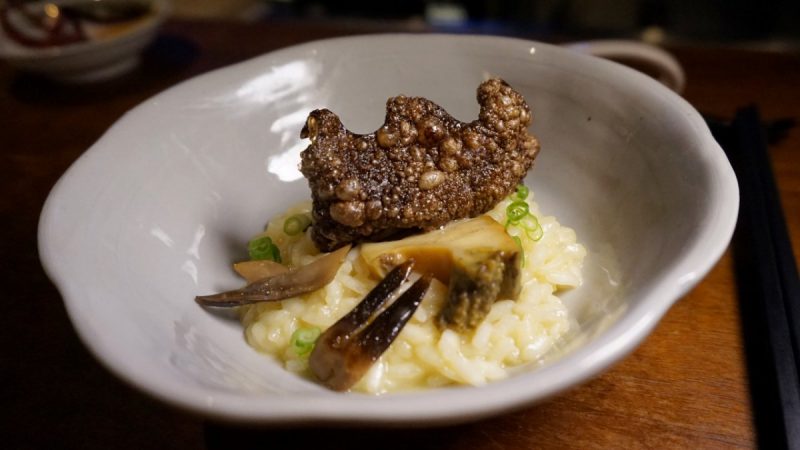
I did the Demon Chef’s 14-course tasting adventure, titled “The Hong Kong Story,” which included seven wine pairings. Each creatively titled course had a back story, relating to the history of Hong Kong or the personal background of Chef Leung. Menu highlights included his signature “chian dan chee” (spam and eggs with truffle) served in a baby food jar and fried foie gras which we injected with bamboo liquor ourselves. Each course was more interesting and creative than the last and the presentation – both the physical presentation of the food and the verbal description by the serving staff – was like nothing else I’ve ever experienced.
Visit boinnovation.com
Sushi Shikon
With only eight seats and just two dinner services per night, Sushi Shikon is the most difficult dinner reservation in Hong Kong to secure. The meal is a two-hour tasting experience where guests observe and interact with the master sushi chefs working right in front of them. More than just a meal, the restaurant strives to provide a complete Japanese cultural experience, observing traditional techniques, customs and etiquette.
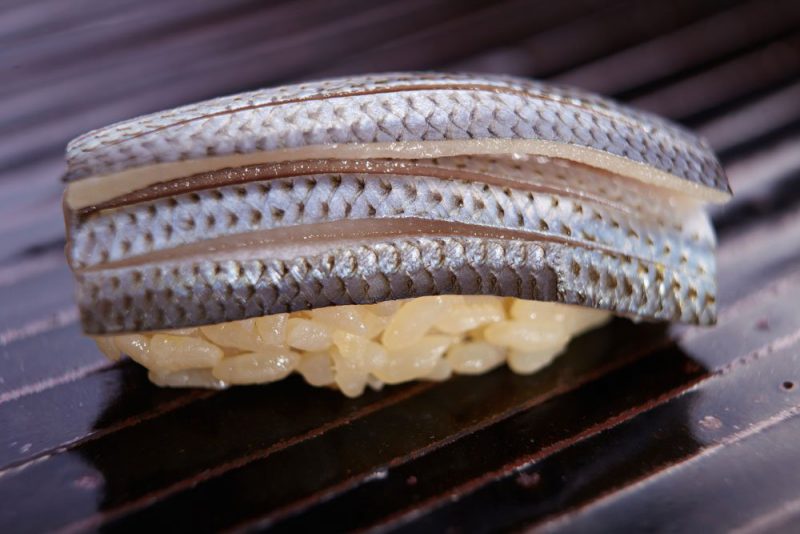
With only eight seats and two dinner services per night, Sushi Shikon is one of the most difficult dinner reservations to secure in Hong Kong (Photo courtesy of Sushi Shikon)
After finding enormous success with Sushi Yoshitake, his original Ginza location in Tokyo, master sushi chef Masahiro Yoshitake decided Hong Kong was ready for authentic, Ginza-style sushi. There is no menu, no conveyor belt of various rolls; each day’s menu is based on what’s fresh. Every afternoon, the restaurant receives a special delivery of live seafood, bought fresh from Tokyo’s legendary Tsukiji Fish Market that morning. The single course omakase dinner is $450 per person and includes six appetizers and ten pieces of sushi, along with a seasonal appetizer, seasonal sashimi and steamed abalone in liver sauce. You also get a seasonal lightly grilled fish or boiled octopus.
Visit sushi-shikon.com
Lung King Heen
With sweeping views across Victoria Harbor from its location inside the beautiful Four Seasons Hong Kong, Lung King Heen offers a wonderful modern, yet traditional take on Cantonese cuisine. The restaurant was the first Cantonese restaurant ever to achieve the
distinguished three-star rating, receiving its three stars in 2009, the first year Michelin awarded its highly coveted stars to Hong Kong restaurants. Chef Chan YanTak was also the first Chinese chef to achieve the three-Michelin-stars honor.
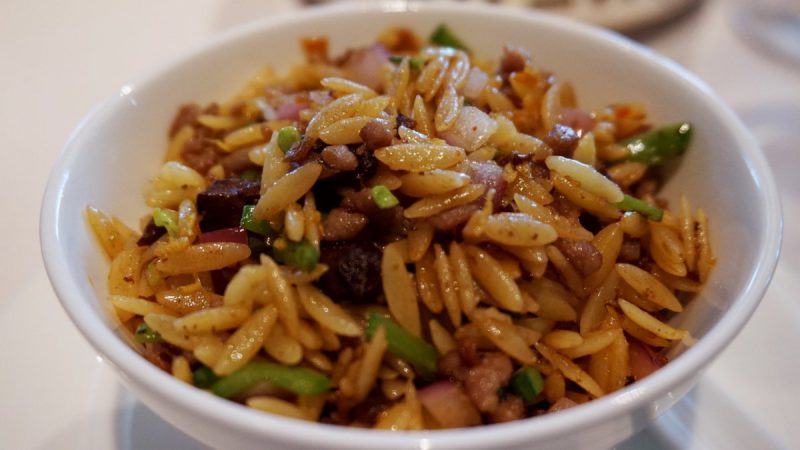
I did a tasting lunch which featured a simple, five-course menu. First, we enjoyed some dim sum. The highlight for me was the delicious pork buns, hot and sweet inside and just baked perfectly on the outside. Next up was the barbecue combination, with barbecued pork, pork belly and a spare rib. Then things got a little fancy with a wok-fried Racan pigeon filet with Sarcodon aspratus mushrooms and Capsicums (spicy peppers).
This was followed by fried puntalette pasta fried rice with minced beef in a vegetarian X.O. sauce. This was also one of my favorites, with Chef Chan substituting the tiny puntalette pasta for rice. The wine pairings were excellent and service was what you would expect in a Four Seasons restaurant. Dessert started first with a very light and fresh lime pudding with aloe and mint and concluded with a selection of petits fours.
Visit fourseasons.com
Having satisfied my culinary curiosity about three-Michelin-stars, my next adventure will be to dine at all 14 of the city’s two-Michelin-star restaurants. I already have four of them under my belt, so stay tuned.
